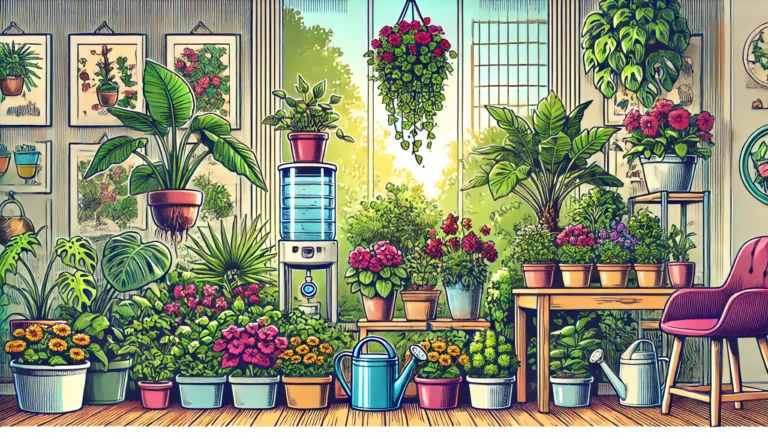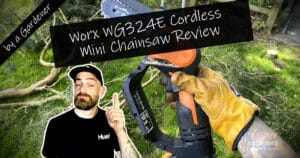Introduction
In today’s fast-paced world, finding time for hobbies like gardening can be a challenge. That’s where self-watering indoor gardens come into play, offering a practical solution for those who love plants but lack the time for daily care. This guide will delve into the benefits and setups of self-watering systems, helping you to maintain lush, vibrant plants effortlessly.
Perfect for anyone looking to enhance their living space with a touch of greenery, our easy plant care tips for 2024 will ensure your indoor garden thrives with minimal effort.
Understanding Self-Watering Systems
Self-watering systems are ingeniously designed to provide a consistent water supply to plants using wicking systems or reservoirs. These systems utilize the natural capillary action of soil, which pulls water upwards to the plant roots only when needed. This method is especially beneficial for regulating moisture in the soil and preventing water from stagnating.
Various types of self-watering systems are available, ranging from simple passive designs to more sophisticated setups with automated timers and pumps. To maintain these systems optimally, it’s crucial to regularly check water levels and keep the reservoir clean to prevent algae growth and ensure efficient operation.
Types of Self-Watering Systems
| System Type | Mechanism | Maintenance Level | Suitable For |
|---|---|---|---|
| Passive Systems | Capillary mats or wicks | Low | Small to medium plants |
| Semi-Automatic | Reservoirs with adjustable waterings | Moderate | Larger indoor gardens |
| Fully Automatic | Pump and timer systems | High | Advanced indoor gardening |
Benefits of Self-Watering Indoor Gardens
The primary benefit of using self-watering indoor gardens is their ability to provide consistent moisture to plants, which is key for healthy growth and development. These systems are designed to minimize water wastage, making them an eco-friendly option as they significantly reduce the need for frequent watering.
Moreover, they are ideal for individuals with busy schedules or those who often travel, as the plants can self-sustain with minimal intervention. Overall, self-watering systems simplify the gardening process and make it more accessible to everyone, regardless of their lifestyle.
Choosing the Right Plants for Self-Watering Indoor Gardens
Choosing the right plants is crucial for the success of a self-watering indoor garden. Different plants have varying needs in terms of water and light, and their compatibility with self-watering systems can differ. Below is a table that categorizes some popular plants suitable for these systems, along with their specific needs:
Plant Selection for Self-Watering Systems
| Plant Name | Water Needs | Light Requirements | Suitability for Self-Watering |
|---|---|---|---|
| Spider Plant | Moderate | Indirect, moderate | High |
| Philodendron | Moderate | Low to bright, indirect | High |
| Basil | Moderate to high | Full sun | Moderate |
| Mint | High | Full sun to partial shade | High |
| Orchids | Low | Bright, indirect | Moderate |
| African Violet | Moderate | Moderate, indirect | High |
Setting Up Your Self-Watering Indoor Garden
Setting up a self-watering indoor garden involves selecting the right type of container, which should be suitable for the size and type of plants you wish to grow. The container must also accommodate a water reservoir adequately.
Installation of the water reservoir is straightforward, but ensuring it is properly maintained is vital for the system to function correctly. Placing your garden in an area where your plants will receive sufficient natural or supplemental light will also significantly affect their health and growth.
Maintenance Tips for Self-Watering Indoor Gardens
Maintaining a self-watering garden involves routine checks to ensure the water level is adequate and the system is functioning as intended. Adding nutrients to the water can also promote robust plant growth, replicating the natural benefits of occasional rainwater.
Regular cleaning of the system is recommended to prevent issues such as algae growth, which can clog the system and negatively impact plant health.
Common Issues and Troubleshooting
Even the best setups can encounter issues such as overwatering or underwatering, depending on environmental conditions and system settings. Symptoms of these issues often manifest as either yellowing leaves or dry, wilting plants. Maintaining a regular inspection schedule can help identify and rectify such problems before they harm the plant.
Additionally, understanding the signs of root health issues, like root rot, will allow for quicker interventions, preserving your garden’s vitality.
Conclusion
Embrace the simplicity and efficiency of self-watering indoor gardens to enhance your home with lush, vibrant greenery. These systems not only conserve water and time but also provide your plants with the precise hydration they need to flourish. Ideal for beginners and seasoned gardeners alike, self-watering gardens are a smart choice for any plant enthusiast looking to simplify their gardening routine.
Get started today and enjoy the benefits of a healthier, more beautiful indoor garden.





